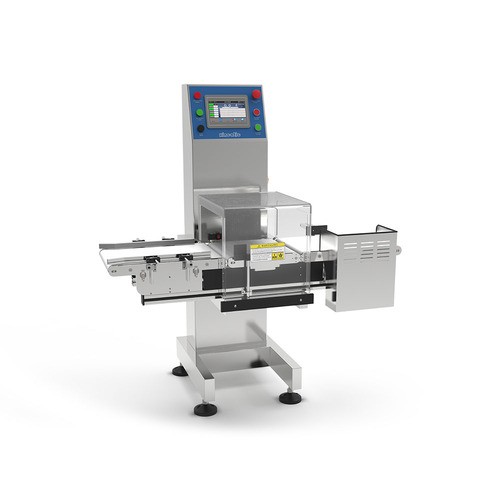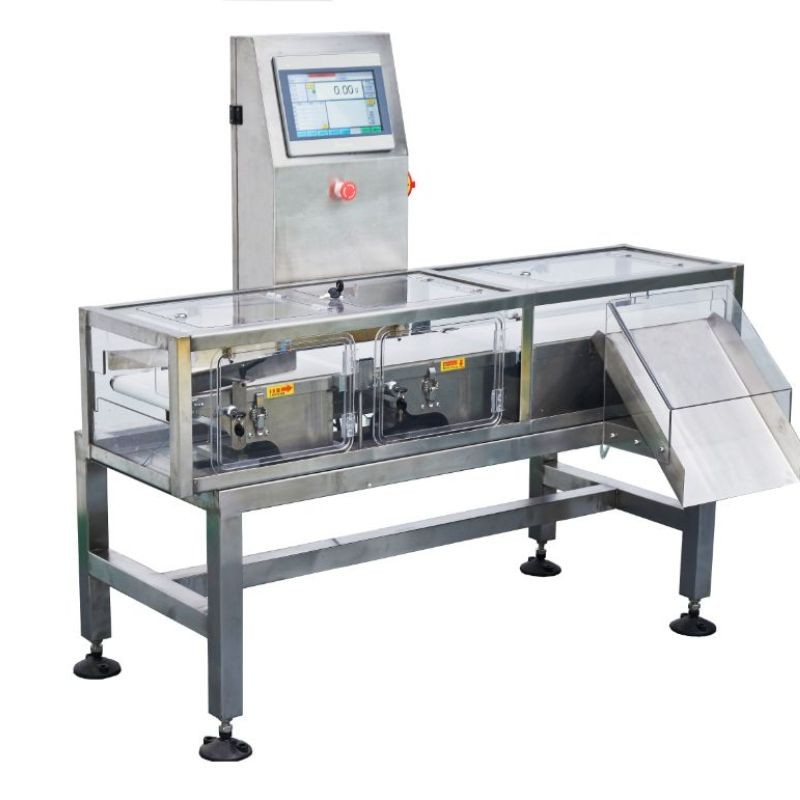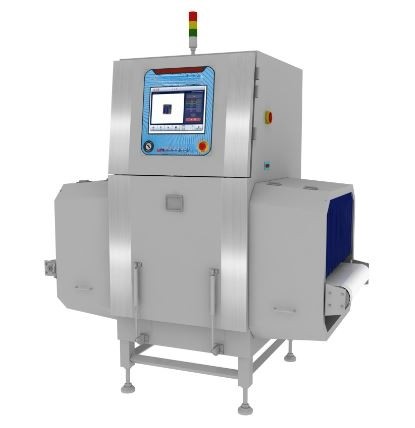dry food metal detector system
Dry food refers to food items that have low moisture content, typically less than 20%. The removal of moisture helps prevent the growth of microorganisms like bacteria, yeasts, and molds, preserving the food and extending its shelf life. Dry foods come in various forms, and they can include both raw ingredients and processed products. Here are some common categories of dry foods and examples within each category:
## 1. **Grains and Cereals:**
- **Rice:** Varieties such as white rice, brown rice, basmati rice.
- **Wheat:** Wheat berries, bulgur, couscous.
- **Oats:** Rolled oats, quick oats, steel-cut oats.
## 2. **Legumes and Pulses:**
- **Beans:** Kidney beans, black beans, chickpeas.
- **Lentils:** Green lentils, red lentils, brown lentils.
- **Peas:** Split peas, green peas.
## 3. **Nuts and Seeds:**
- **Nuts:** Almonds, walnuts, cashews.
- **Seeds:** Sunflower seeds, pumpkin seeds, chia seeds.
## 4. **Dried Fruits:**
- **Raisins:** Black raisins, golden raisins.
- **Apricots:** Dried apricots.
- **Cranberries:** Dried cranberries.
## 5. **Pasta:**
- **Spaghetti:** Traditional pasta strands.
- **Macaroni:** Elbow macaroni, shell macaroni.
- **Noodles:** Egg noodles, rice noodles.
## 6. **Bread and Bakery Products:**
- **Crackers:** Saltine crackers, whole grain crackers.
- **Biscuits:** Various types of savory or sweet biscuits.
- **Crispbreads:** Thin, crisp flatbreads.
## 7. **Cereal Products:**
- **Breakfast Cereals:** Cornflakes, granola, muesli.
- **Cereal Bars:** Bars made with oats, nuts, and dried fruits.
## 8. **Dried Herbs and Spices:**
- **Oregano, Basil, Thyme:** Dried herbs used for seasoning.
- **Cumin, Paprika, Turmeric:** Dried spices used for flavoring.
## 9. **Powdered and Dehydrated Products:**
- **Powdered Milk:** Milk that has had the moisture removed.
- **Dehydrated Soups:** Soup mixes with dehydrated ingredients.
## 10. **Instant Foods:**
- **Instant Noodles:** Precooked and dehydrated noodles.
- **Instant Soup Mixes:** Quick soups that require the addition of hot water.
## 11. **Snack Foods:**
- **Potato Chips:** Thin slices of potato fried or baked.
- **Pretzels:** Baked or fried dough in a twisted knot shape.
- **Popcorn:** Dried and popped corn kernels.
## 12. **Dehydrated Vegetables:**
- **Dried Tomatoes:** Sun-dried or dehydrated tomatoes.
- **Dried Mushrooms:** Varieties of mushrooms with the moisture removed.
## 13. **Ready-to-Eat Meals:**
- **Instant Noodle Cups:** Cups with pre-cooked noodles and dehydrated flavorings.
- **Dehydrated Backpacking Meals:** Lightweight meals for outdoor activities.
## 14. **Flour and Baking Ingredients:**
- **All-Purpose Flour:** Versatile flour used in baking.
- **Baking Powder, Baking Soda:** Leavening agents for baking.
## 15. **Packaged Snacks:**
- **Trail Mix:** Mixtures of nuts, seeds, dried fruits, and sometimes chocolate.
- **Jerky:** Dehydrated and seasoned meat, often beef or turkey.
## 16. **Powdered Beverages:**
- **Instant Coffee:** Dehydrated coffee granules.
- **Powdered Tea:** Instant tea mixes.
Dry foods are valued for their convenience, long shelf life, and versatility in various culinary applications. They are often pantry staples and serve as the foundation for many recipes, offering a wide range of options for consumers to prepare satisfying and nutritious meals.
The role of a metal detector in the context of dry food production is to ensure the safety and quality of the final products by identifying and preventing potential hazards associated with metal contamination. Metal detectors play a critical role as a quality control measure and are often considered a Critical Control Point (CCP) in the Hazard Analysis and Critical Control Points (HACCP) system. Here's an exploration of the specific role of metal detectors in the production of dry foods:
## I. Hazard Identification:
### A. **Metal Contamination:**
1. **Sources:** Metal contaminants can originate from processing equipment, packaging materials, or even the raw ingredients used in the production of dry foods.
2. **Risk Assessment:** Evaluating the risk of metal contamination during different stages of production, including milling, blending, and packaging.
## II. Critical Limits:
### A. **Detection Sensitivity:**
1. **Establishing Limits:** Setting critical limits for metal detection sensitivity to ensure that the metal detector can identify and reject even small metal particles.
2. **Metal Types:** Considering different types of metals (ferrous, non-ferrous, and stainless steel) and establishing appropriate detection thresholds for each.
## III. Monitoring:
### A. **Real-Time Monitoring:**
1. **Continuous Inspection:** Implementing metal detectors at strategic points in the production line for continuous monitoring of dry food products.
2. **Automated Systems:** Utilizing automated metal detection systems that can quickly identify and signal the presence of metal contaminants.
### B. **Routine Checks:**
1. **Daily Inspections:** Conducting routine checks and inspections of metal detectors to ensure they are functioning correctly.
2. **Calibration:** Regular calibration to maintain the accuracy of metal detection systems.
## IV. Control Measures:
### A. **Automatic Rejection:**
1. **Swift Rejection Systems:** Implementing automatic rejection systems that quickly remove products containing metal contaminants from the production line.
2. **Minimizing Product Impact:** Designing rejection systems to minimize the impact on the overall production process while ensuring contaminated products are removed promptly.
### B. **Equipment Design:**
1. **Material Selection:** Choosing non-metallic or food-grade materials for equipment in close proximity to the product to minimize the risk of metal contamination.
2. **Separation Distance:** Ensuring an adequate separation distance between metal components of machinery and the product.
## V. Verification:
### A. **Periodic Testing:**
1. **Sample Testing:** Periodically testing product samples to verify the effectiveness of metal detection systems.
2. **Challenge Testing:** Intentionally introducing metal test pieces during production to confirm that metal detectors can reliably identify and reject contaminated products.
### B. **Record Keeping:**
1. **Documentation:** Maintaining detailed records of metal detector performance, including calibration logs, inspection results, and any corrective actions taken.
2. **Traceability:** Recording information that allows for traceability of products in case of a metal contamination incident.
## VI. Employee Training:
### A. **Operating Procedures:**
1. **Training Programs:** Providing comprehensive training to employees on the proper use and operation of metal detectors.
2. **Response Protocols:** Ensuring that employees are familiar with response protocols in case of metal detection alerts.
## VII. Continuous Improvement:
### A. **Root Cause Analysis:**
1. **Investigation Protocols:** Establishing procedures for investigating the root causes of metal contamination incidents.
2. **Corrective Actions:** Implementing corrective actions to address identified issues and prevent future occurrences.
## VIII. Integration with Other CCPs:
1. **Comprehensive Control:** Integrating metal detection as part of a comprehensive food safety program that includes other CCPs, such as sanitation measures and allergen control.
## IX. Conclusion:
Metal detectors serve as a critical control point in the production of dry foods by identifying and preventing metal contamination hazards. Through continuous monitoring, routine checks, and employee training, manufacturers can effectively integrate metal detection systems into their CCP control measures. The implementation of robust metal detection protocols ensures that dry food products are free from metal contaminants, meeting safety standards and consumer expectations.




